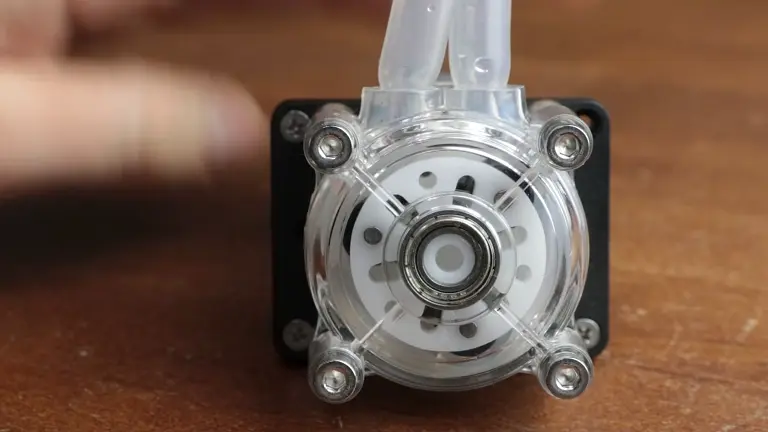A peristaltic pump moves fluid through a flexible tube squeezed by rotating rollers. This action ensures the fluid’s direct contact only with the tubing.
Peristaltic pumps stand out in the world of fluid transfer for their exceptional ability to handle a wide range of fluids without contamination. Known for their simplicity and efficiency, these pumps are a go-to solution in industries like pharmaceuticals, food and beverage, and chemical processing.
The design of peristaltic pumps minimizes maintenance since the fluid doesn’t touch the pump mechanism, reducing the risk of wear and tear. This unique feature makes them highly reliable and easy to clean, which is crucial in applications requiring high levels of hygiene.
Their gentle pumping action is perfect for handling sensitive fluids like blood or viscous slurries without causing damage. With versatility and low maintenance requirements, peristaltic pumps offer a practical solution for precise fluid handling across various sectors.
What Is A Peristaltic Pump
A Peristaltic Pump is a type of pump often used to move fluids through a tube. This pump works by squeezing the tube in a wave-like motion, a process known as peristaltic pumping. It’s like how you’d squeeze toothpaste from a tube but much more precise. Peristaltic pumps are super useful because they keep the liquid and pump parts separate. This means the pump stays clean, and there’s no risk of the fluid getting contaminated. It’s perfect for when you need to move clean or sterile liquids, like in food production or medical settings.
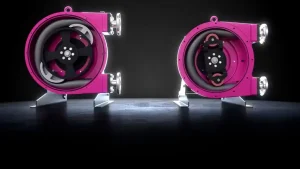
Basic Mechanics of Peristaltic Pump
The Basic Mechanics of a Peristaltic Pump are fascinating and simple. Here’s how it works:
- A tube is filled with the liquid to be moved.
- A rotor with ‘rollers’ or ‘shoes’ pinches the tube as it turns.
- This action pushes the liquid through the tube.
- As the wheel turns, the pinched area moves along the tube, making a wave.
- The tube opens back up after the roller passes, drawing more liquid in.
This design means the liquid only touches the tube and not the pump, keeping everything clean and safe. Plus, it’s great at handling a wide range of fluids, even those with chunks or bits in them! Think of it like a little conveyor belt for liquids, moving them smoothly from one place to another without any mess.
Common Applications
Peristaltic Pumps have a bunch of cool uses. You’ll find them in lots of different places because they’re so handy. Here are some of the places where peristaltic pumping shines:
- Medical field: They’re used in dialysis machines and for giving patients IV medicines because they’re super clean and accurate.
- Food and beverage industry: They help make sure things like juice and sauce are pumped without getting any pump bits in them.
- Chemical dosing: They’re good for adding just the right amount of chemicals to things like swimming pools or in water treatment plants.
- Laboratory research: Scientists use them to move around small, precise amounts of liquids when they’re doing experiments.
Because peristaltic pumps are gentle on fluids and super clean, they’re perfect for jobs where you don’t want any mix-ups or contamination. They make sure things are moved safely and exactly where they need to go, every single time.
Key Components of Peristaltic Pump
Understanding the key components of a peristaltic pump is essential for anyone using this versatile piece of equipment. A peristaltic pump, known for its gentle handling of fluids, relies on a few critical parts to function effectively. Each component plays a pivotal role in the pump’s operation, directly impacting its efficiency and the integrity of the pumped media.
Let’s dive into these components and learn what makes them integral to a peristaltic pump’s performance.
Hoses And Tubing
The hoses and tubing are the lifeline of any peristaltic pump. They are responsible for containing and moving the fluid. The durability and compatibility of these components are vital for maintaining the quality of the pump and the fluid being transferred.
Here are key facts about hoses and tubing:
- Material: Typically made from silicone, rubber, or thermoplastic, chosen for their flexibility and chemical resistance.
- Size: Available in various sizes to match the flow rate requirements of different applications.
Considerations for selecting the right hose or tubing include:
| Factor | Importance |
|---|---|
| Chemical Compatibility | Must ensure the material can handle the fluid without degrading. |
| Pressure Rating | Needs to withstand the pump’s operational pressure. |
The quality of hoses and tubing directly affects the pump’s efficiency and lifespan. Users must regularly check for wear and tear to maintain optimal performance.
Rotating Mechanism
The rotating mechanism is the heart of the peristaltic pump. It is the part that creates the peristaltic action needed to move fluids through the tubing. This mechanism includes rollers or shoes that compress and release the hose or tube in a rotating fashion. Here is what to know:
- Design: The design of the rotating mechanism determines the pump’s efficiency and flow rate.
- Operation: Smooth operation ensures less wear on the tubing, extending its life.
Features of a well-designed rotating mechanism include:
| Component | Function |
|---|---|
| Rollers/Shoes | Compress the tubing to move the fluid. |
| Bearings | Support smooth rotation of the mechanism. |
Regular maintenance of the rotating mechanism is crucial. Users should check for signs of misalignment or wear. A well-maintained rotating mechanism ensures consistent fluid delivery and reduced downtime.
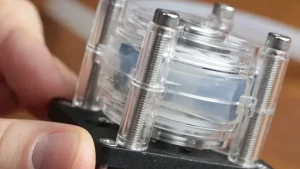
How Does a Peristaltic Pump Work?
A peristaltic pump, often used in various industries, works through a unique and efficient process. It moves fluids in a way that prevents contamination. The pump has a flexible tube and rollers that create pressure. This action pushes the liquid forward. Let’s dive into the details of how does a peristaltic pump work and explore its inner workings.
Fluid Movement
The movement of fluid in a peristaltic pump relies on a simple yet clever design. Here’s how the process unfolds:
- A flexible tube inside the pump carries the fluid.
- Rollers or shoes compress the tube as they rotate.
- This compression creates a sealed area, known as a “peristaltic action”.
- As the roller moves, it forces the fluid to move from the inlet to the outlet.
- The tube’s elasticity returns it to its original shape after the passing of the rollers.
- This action draws more fluid into the tube, continuing the cycle.
The table below shows the sequential steps in fluid movement:
| Step | Action | Result |
|---|---|---|
| 1 | Roller contacts tube | Tube flattens, creating a seal |
| 2 | Roller moves along tube | Fluid pushes forward |
| 3 | Roller releases tube | Tube returns to shape, draws in fluid |
This mechanism ensures a gentle and clean movement of fluids, making it perfect for sensitive applications.
Pressure Generation
The generation of pressure in a peristaltic pump is a key function. It enables the fluid to move through the tubing. Here is a breakdown of this process:
- The pump casing holds the tube in place.
- Rollers compress the tube, starting at the pump inlet.
- This action creates a pressure gradient along the tube.
- The high-pressure zone moves the fluid through the tube.
- No backflow occurs due to the tight seal from the rollers.
- The pump’s design allows for precise control over the pressure.
Pressure generation happens in these steps:
| Step | Action | Effect on Pressure |
|---|---|---|
| 1 | Roller compresses tube | Increases pressure behind roller |
| 2 | Fluid moves with pressure | Creates a steady flow |
| 3 | Tube expansion | Reduces pressure, draws in more fluid |
This precise pressure control makes the peristaltic pump ideal for dosing and transferring sensitive fluids without risk of contamination.
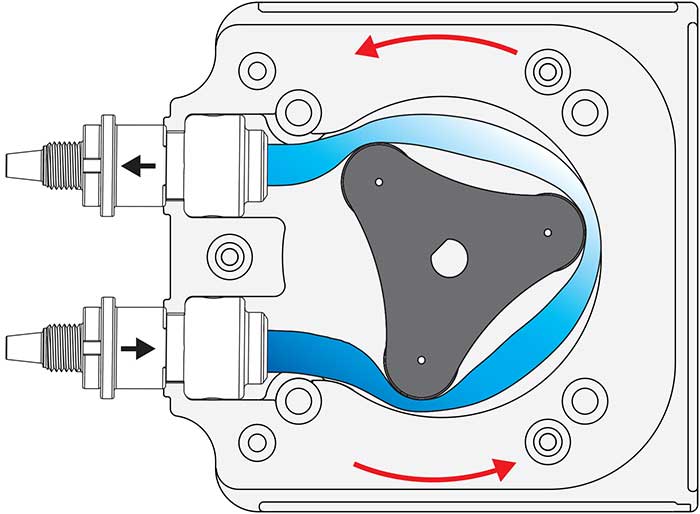
Credit: www.pumpsandsystems.com
Advantages
A peristaltic pump stands out in the realm of fluid movement technologies. Its design and operation offer a blend of benefits that cater to various applications. These pumps are highly favored in industries where precision and cleanliness are paramount. Let’s explore the key advantages that make peristaltic pumps a go-to choice for professionals.
Contamination-free
One of the standout advantages of a peristaltic pump is its ability to prevent contamination. This is crucial in industries like food processing, pharmaceuticals, and biotech. Here’s why a peristaltic pump maintains a pristine environment for fluids:
- No direct contact: The fluid only touches the tubing, not the pump mechanism.
- Isolated system: The closed tubing system shields the fluid from external contaminants.
- Disposable tubing: Users can replace the tubing easily, ensuring a sterile process.
These points are vital for understanding how peristaltic pump uses align with the need for clean operations. To illustrate, consider the table below showing a comparison with other pump types: Pump TypeRisk of ContaminationSuitability for Sterile ApplicationsPeristaltic PumpLowHighCentrifugal PumpMediumMediumPiston PumpHighLow
Self-priming
Another significant advantage of peristaltic pumps is their self-priming capability. Self-priming is a pump’s ability to start without the need to fill the system with liquid beforehand. Below are key points that highlight this feature:
- Ready to run: Peristaltic pumps can operate dry without risking damage.
- No backflow: They prevent liquid from flowing back into the system once stopped.
- Versatile function: These pumps can handle air, gas, and foam without losing efficiency.
When considering peristaltic pump uses, self-priming is a major factor. This feature allows for a smoother, more reliable operation across different scenarios. For instance, emergency situations where quick action is needed.
Here’s a brief look at how self-priming benefits various sectors: SectorBenefit of Self-PrimingWastewater TreatmentHandles slurries and gases without interruption.Chemical DosingEnsures accurate dosing without the need for manual priming.Food and BeverageMaintains product integrity by avoiding air entrapment.
Limitations
Peristaltic pumps are popular for moving fluids in various industries. They work by squeezing a tube, pushing the fluid. Despite their benefits, they have some limitations. Let’s explore these, focusing on flow rate variability and wear and tear.
Flow Rate Variability
One key limitation of peristaltic pumps is flow rate variability. This means the amount of fluid the pump moves can change. This is because of how the pump works and the peristaltic pump pressure. Here are some points:
- The tube’s flexibility affects the flow.
- Changes in temperature can change the flow rate.
- Wear on the tube can also lead to less fluid being moved.
Let’s look at a table comparing the peristaltic pump flow rate under different conditions:
| Condition | Flow Rate |
|---|---|
| New Tube | High |
| Worn Tube | Low |
| Cold Temperature | Medium |
This shows how flow can vary. It’s important to monitor these factors to keep the flow steady.
Wear And Tear
Another limitation is wear and tear. The pump’s parts, especially the tube, wear out. This happens faster if the pump is used a lot or with rough materials. Here are some reasons for wear:
- Frequent use: Using the pump a lot can wear it out faster.
- Rough materials: Moving rough or sharp materials can damage the tube.
- Chemical damage: Some chemicals can harm the tube, making it wear out.
Knowing this, it’s important to:
- Check the pump often for signs of wear.
- Choose the right tube material for what you’re moving.
- Replace worn parts to keep the pump working well.
This will help your pump last longer and work better.
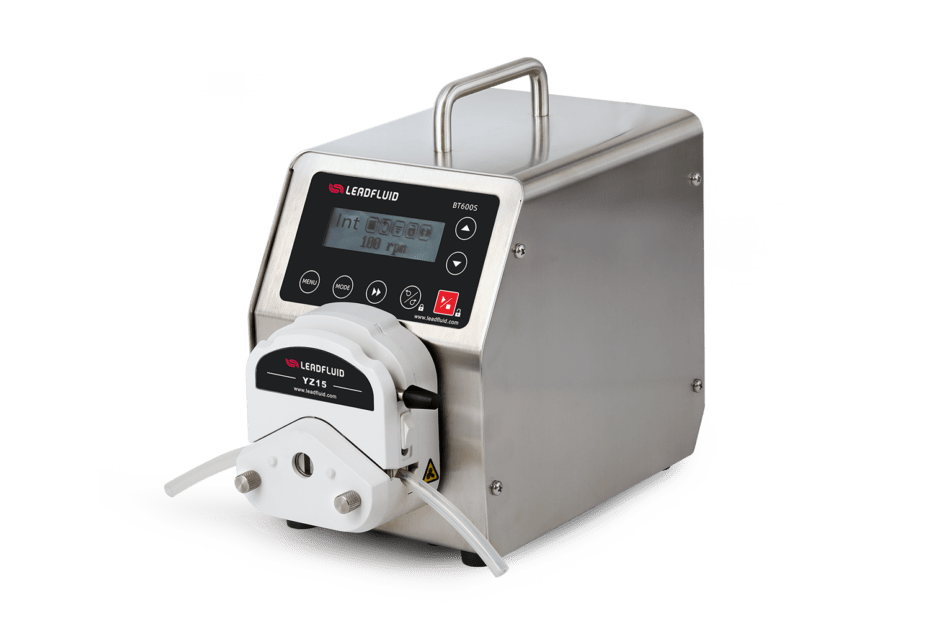
Credit: leadfluid.com
Choosing The Right Pump
Finding the perfect peristaltic pump requires thought. This pump moves fluids in a unique way. It squeezes a tube, pushing liquid forward. Not all pumps fit every job. The key lies in two areas: materials and size. Let’s dive into how to pick the right one.
Material Considerations
Materials matter a lot. A peristaltic pump’s parts touch the fluid. This means the materials must resist the fluid. They should not break down or react. Here are some points to think about:
- Tubing material: It needs to be strong. It should not leak or tear easily.
- Chemical resistance: The material must not react with the fluid.
- Temperature tolerance: It should work well in the fluid’s temperature.
Let’s look at a table showing common materials and their features:
| Material | Chemical Resistance | Temperature Range |
|---|---|---|
| Silicone | Good | -60°C to 200°C |
| PTFE | Excellent | -200°C to 260°C |
| PVC | Average | 0°C to 50°C |
Choosing the right material keeps the pump safe. It also makes sure the fluid stays pure. Always check the peristaltic pump symbol. It shows the material used.
Size And Capacity
The size of the pump and how much it can move are critical. A big project needs a big pump. A small task? A small pump works fine. Here are some key points:
- Flow rate: How much fluid moves through the pump over time.
- Pressure: The pump must handle the system’s pressure.
- Size: The pump should fit in the space you have.
Consider this info:
- Measure the space for the pump.
- Figure out the flow rate you need.
- Check the pressure in your system.
Matching the pump’s size and capacity with your needs is smart. It ensures efficiency. Plus, it can help save on peristaltic pump price. Bigger pumps cost more. So, picking the right size can save money.
Maintenance Tips
A peristaltic pump is a versatile tool for various industries, beloved for its gentle handling of fluids. The peristaltic pump working principle involves the compression of a flexible hose or tube to move liquids. To keep it running smoothly, regular maintenance is key. Let’s dive into some essential tips to maintain your pump’s performance and longevity.
Regular Inspection
Just like any other machinery, peristaltic pumps require routine checks to ensure top-notch performance. Here’s a simple guide to follow:
- Examine the tubing: Look for signs of wear, such as cracks or stiffness. Tubing is the heart of the pump and needs to stay in good shape.
- Check the rollers: They should move freely without obstruction. Any resistance can lead to malfunctions.
- Inspect for leaks: Fluid leaks can cause damage not just to the pump but also to the surrounding area.
- Monitor the pump’s speed and pressure: Abnormalities may indicate internal issues needing immediate attention.
Keep a log of inspections to track the pump’s condition over time. This helps in predicting when parts might need replacement.
| Component | What to Check | Frequency |
|---|---|---|
| Tubing | Wear and tear, brittleness | Every use |
| Rollers | Rotation, wear | Weekly |
| Leaks | Connections, seals | Daily |
| Performance | Speed, pressure | Monthly |
Cleaning Procedures
A clean peristaltic pump is a happy pump. Here’s how to keep it spotless:
- Turn off the pump: Safety first! Always shut down the pump before cleaning.
- Remove the tubing: Detach it gently for a thorough clean.
- Use mild cleaners: Harsh chemicals can damage the pump components. Opt for gentle, pump-friendly options.
- Rinse with water: After cleaning, flush the system with water to remove any residue.
- Dry thoroughly: Before reassembling, ensure all parts are dry to prevent bacterial growth.
Regular cleaning not only maintains pump efficiency but also the integrity of the fluids being processed. Implement a cleaning schedule that aligns with how often the pump is used.
| Step | Action | Details |
|---|---|---|
| 1 | Disassemble | Remove tubing and other washable components. |
| 2 | Clean | Apply mild detergent and scrub gently. |
| 3 | Rinse | Use clean water to wash off soap. |
| 4 | Dry | Air dry components or use a clean cloth. |
| 5 | Reassemble | Put the pump back together once all parts are dry. |
Future Trends
Peristaltic pumps are clever devices that move fluids in many industries. People use them in labs, food production, and medicine. They work by squeezing a tube to push liquids along. This method keeps the liquid clean and safe. Now, let’s look at what the future holds. New tech and a focus on green practices will change these pumps. They will get smarter, more efficient, and kinder to our planet.
Technological Innovations
Exciting tech changes are shaping peristaltic pumps. These changes make pumps better and easier to use. Here are some key trends:
- Smart Pumps: These pumps have computers inside. They can adjust how they work to be more efficient.
- Touch Screens: New pumps have screens that let users control them easily.
- Remote Monitoring: People can check on these pumps from far away using the internet.
Future pumps will not just be tools, but smart partners in work. They will have sensors to spot problems early. This means they can tell you when they need fixing before they break. Also, they will use less power and save money.
| Trend | Benefits |
|---|---|
| Smart Sensors | Less downtime, longer life |
| Energy Efficiency | Cuts costs, saves power |
Sustainability Focus
Green practices are a big deal for the future of peristaltic pumps. Makers want to reduce waste and save energy. Here’s what’s coming up:
- Eco-friendly Materials: Pumps will use stuff that’s better for Earth.
- Recycling: Old pumps can be taken apart and made into new ones.
- Low Power Use: New designs need less electricity to run.
These pumps will help companies meet green goals. They will use less water and produce less waste. Plus, they will be made to last longer. This means less need for new parts and repairs. It’s all about doing more with less and caring for our world.
| Green Practice | Impact |
|---|---|
| Long-lasting Design | Less waste, more savings |
| Reduced Energy Use | Lower bills, happy Earth |
FAQs
Many people have questions about peristaltic pumps. This unique type of pump has many uses but also comes with its own set of features and limitations. In this FAQ section, we’ll tackle some common inquiries to help you understand peristaltic pumps better. Let’s dive into the specifics and clear up any confusion you might have.
What Are The Disadvantages Of A Peristaltic Pump?
Even though peristaltic pumps are versatile, they have some drawbacks. They can be less efficient with high-viscosity fluids and may have limited pressure capabilities. The hoses in these pumps also wear out over time and will need replacing. Lastly, they can be more expensive up front compared to some other pump types.
What Is The Difference Between Normal Pump And Peristaltic Pump?
A normal pump, like a centrifugal pump, moves fluids by spinning them around and pushing them out. A peristaltic pump, on the other hand, squeezes a flexible tube to move the fluid. This means the fluid only touches the tube, not the pump parts, making it cleaner and reducing contamination risks.
Do Peristaltic Pumps Push Or Pull?
Peristaltic pumps work by alternately squeezing and releasing a flexible tube. This action creates a vacuum that pulls fluid in and then pushes it forward. So, in essence, peristaltic pumps do both—they pull the fluid into the tube and then push it through to the other side.
Can A Peristaltic Pump Run Dry?
One of the benefits of a peristaltic pump is its ability to run dry without getting damaged. This is because the pump’s mechanism doesn’t rely on the fluid for lubrication—the tube is the only part in contact with the fluid. So, if there’s no fluid, the pump can still operate without any trouble.

Credit: www.youtube.com
Conclusion
Embracing the versatility of peristaltic pumps marks a smart move for diverse industries. Their precision, durability, and contamination-free operation stand out. For fluid management needs, this technology proves indispensable. Don’t hesitate to consider a peristaltic pump for reliable, efficient solutions.
Your operational success might just depend on it.

